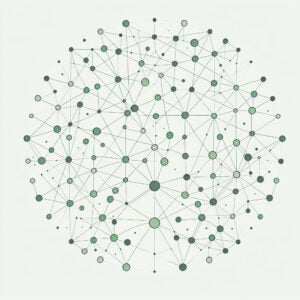Could Google’s antitrust cases change how we use the internet? The short answer: possibly.
Marketers are on edge, as the remedies for this case could disrupt the bedrock of marketing. Search marketing, for example, is a linchpin of acquisition strategies that commands nearly 40% of US ad spend. Google’s ad tech commands a massive share of the online display market. If the cornerstone that is Google marketing crumbles, the ripple effects would be massive. Traditional search and acquisition strategies could falter.
But this kind of upheaval isn’t the first of its kind. Remember the cookie deprecation reversal and iOS Mail Privacy Protection? While we can’t predict the case outcome, one thing is clear: Marketing is on the cusp of a transformation.
But there’s a silver lining – even as acquisition becomes more challenging, retention can, in some ways, be made simpler.
The economics of acquisition vs. retention
Here’s an inconvenient truth: Acquiring a new customer costs five to seven times more than retaining an existing one. Even though selling to current customers has a success rate of 60%-70%, compared to just 5%-20% for new prospects, 44% of companies still invest more in acquisition, while only 18% prioritize retention.
It’s an odd imbalance. Both are vital for growth. Paid media excels in acquisition, but nurturing existing customers ensures long-term payoff. Acquisition may eat up 27.9% of marketing budgets, but the tools and strategies that focus on nurturing and optimizing existing customers drive a bigger payoff over time. Marketers need to embrace innovative solutions designed to improve profitability and engagement within their existing customer base.
The AI advantage: Bridging the gap
Given the volume of customers many companies engage with, the data inputs can be overwhelming. The granular decisions required only add to the complexity. That’s where AI comes in, making it a perfect match for retention. AI can analyze data at scales not humanly possible; understand each customer’s tastes, motivations and preferences; and map that onto a company’s products and business goal to deliver the best possible experience.
In the case of email, AI transforms every inbox into a curated shopping experience, boosting both engagement and loyalty. It’s a triple threat: Customers receive tailored experiences, marketers improve efficiency, and businesses see measurable growth from their existing customer base. Plus, marketers can finally deliver on the promise of customer-centered marketing, strengthening long-term customer relationships while boosting conversions.
And if strengthening loyalty programs is the highest growth priority among marketing executives, addressing disengagement should come first. Yet many brands stick to tired tactics. Take email marketing: It’s the leading opt-in, first-party channel and one of the most powerful tools for fostering loyalty. However, batch programs – those daily sends that are a staple in almost every marketers’ playbook – often target broad audiences, leaving 90%+ of customers disengaged. It’s a missed chance for deeper connections.
AI can change this. Brands can optimize batch program performance by curating content for each individual customer, rather than the segment, so each person receives the most relevant and engaging experience for them. This leads to more purchases, exploration of lesser-known (and potentially higher-priced) items and strengthening of loyalty. Platforms like Da Vinci report a more than 20% increase in clicks, conversions and revenue, which is clear evidence of AI’s impact.
Bottom line: AI-powered retention = profit
Increasing retention rates by just 5% can boost profits by 25% to 95%. In today’s unpredictable market, focusing on AI-driven retention isn’t just smart; it’s essential.
With the right tools, businesses can turn market challenges into opportunities, building stronger, more profitable customer relationships well into the future.
For more articles featuring Vivek Sharma, click here.















